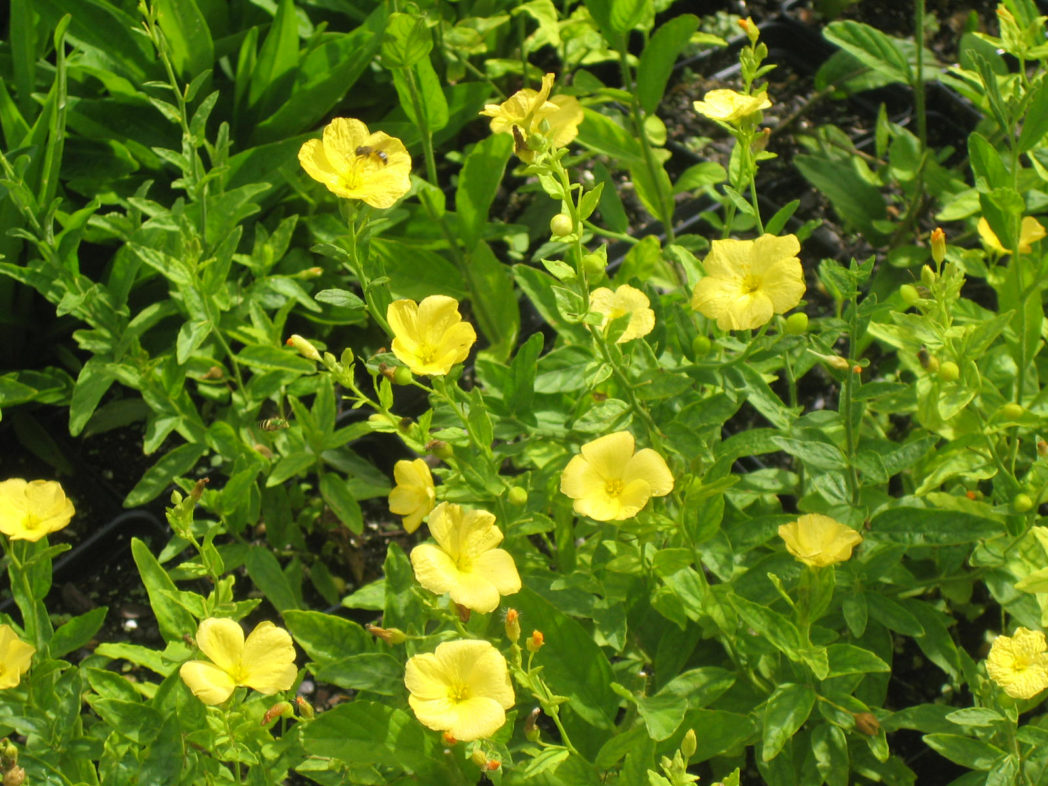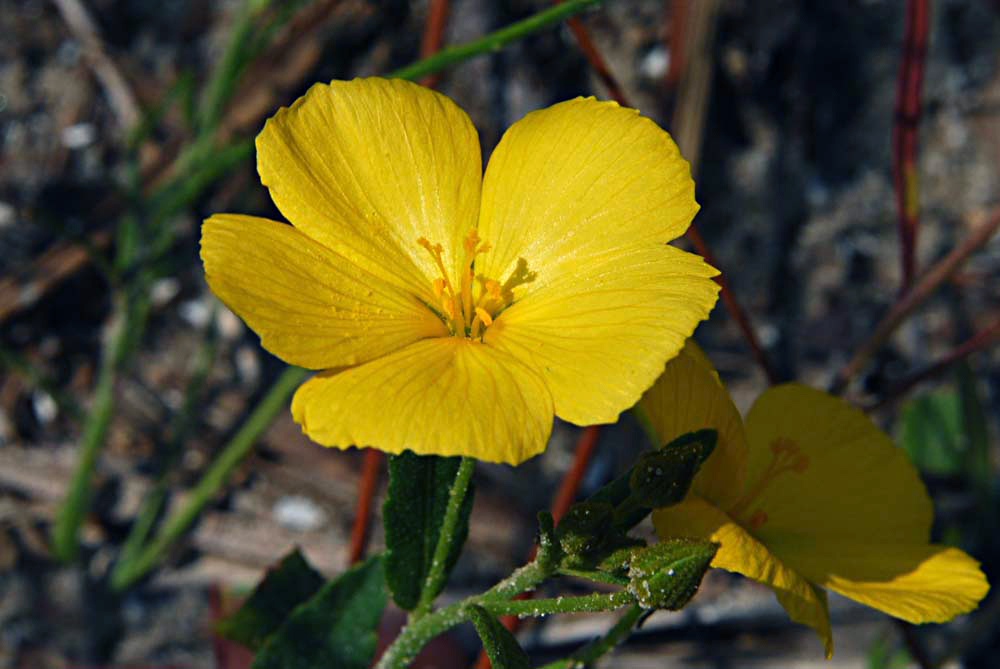Pitted stripeseed
Pictured above: Pitted stripeseed (Piriqueta cistoides subsp. caroliniana) by Wayne Matchett. Click on terms for botanical definitions. View post as a PDF.
Also known as morning buttercup, pitted stripeseed is a cheerful perennial wildflower. It emerges in early spring as multiple stems that spread in various directions to form a moundlike arrangement. Its bright yellow flowers have five petals, five stamens and three stigmas with “frilly” tips. Leaves are dark green and linear with toothed margins. They are alternately arranged. Leaf and stem morphology is regionally variable. Both may be pubescent or smooth; pubescence may give the foliage a coppery tone. The fruit is a three-parted capsule that explodes when ripe to scatter seeds away from the plant. Seeds are long and narrow, with longitudinally striped depressions (hence the common name “pitted stripeseed”).

Pitted stripeseed occurs naturally in open, sandy areas of pine flatwoods and sandhills. It typically blooms in late summer, although it can bloom year-round in southern climes. It attracts small bees and butterflies. Gulf fritillary butterflies may use this wildflower as a host plant as it is chemically similar to the fritillaries’ primary host plants, passionvines. (The genera Passiflora and Piriqueta are in the same order.) Rabbits also like to nibble on the foliage.
Pitted stripeseed was once known as Piriqueta caroliniana but has more recently been reclassified as a subspecies of Piriqueta cistoides. It is the only member of the Turneraceae family native to Florida.
Family: Turneraceae
Native range: Nearly throughout
To see where natural populations of pitted stripeseed have been vouchered, visit florida.plantatlas.usf.edu.
Hardiness: Zones 8A—11
Soil: Adaptable to varied conditions, but prefers dry to moderately moist, well-drained sandy soils
Exposure: Full sun
Growth habit: Variable from 4” to 18” but typically 10” to 12”
Propagation: Seeds, cuttings
Garden tips: Although it is rarely available commercially, Pitted stripeseed’s abundant foliage and flowers make it an interesting addition to a landscape. Plant in clusters along the front edge of a garden or trail where it won’t get lost among other wildflowers and plants. It may spread by suckering and form small colonies.

